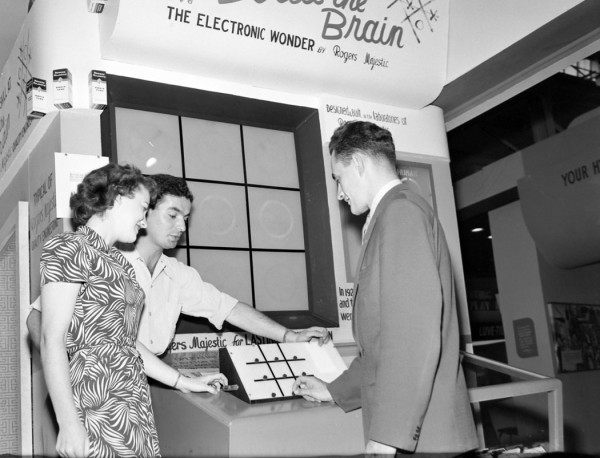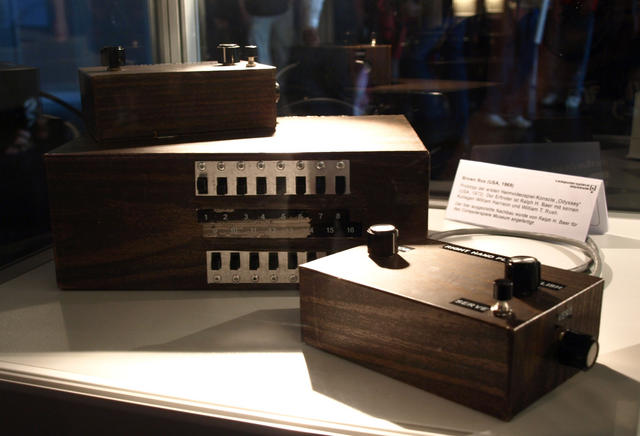
History of Video Games: The Early Years (1940-1972) - Article
by Taneli Palola , posted on 23 January 2016 / 32,414 ViewsThroughout its history the video game industry has had an unfortunate habit of forgetting its own past. I believe that history in general needs to be remembered and studied, and the same is true for the history of video games. This article is a part of a comprehensive look I'm going to take at the history of video games from its humble origins to the present day. As we move forward in time I will cover an increasingly shorter period of time with each article as there will be much more to talk about the closer we get to the present day.
In this series I will be covering the history of video games from the 1940's to the present day. This will be a fairly massive undertaking divided into several parts as there is a lot to cover, especially later as the video game industry begins to grow into the juggernaut it is today. In this first article we will look at the early years of video games, from the 1940's up to the first home console in the early 1970's.
The earliest examples of video game-like machines can be traced all the way back to the year 1940 and the New York World Fair. Nuclear scientist Edward U. Condon designed an early relay based computer that could be used to play the mathematics game Nim. Its impact on the overall development of video games is quite insignificant, but it is one of the earliest examples of a video game-like device ever created. It would be several years before anything similar would appear again.

Interestingly, it would be the technological developments that took place during the Second World War that would enable the development of early electronic video games. However, it would still take some years for electronic games to be publicly shown to audiences. In 1948 Alan Turing and David Champernowne developed the earliest known computer game called Turochamp, a chess simulation game. Unfortunately the game was never actually implemented on a computer as it was too complex for the machines of the time.
The first electronic game to be shown to public was a game called Bertie The Brain, which was made for the Canadian National Exhibition in 1950. Despite its rather unusual name, the game was actually an electronic version of tic-tac-toe. While it is difficult to say what is actually the first ever video game, Bertie The Brain is one of the prime candidates for that specific distinction. It is possibly the first example of an electronic game with a visual display showing the game.
Despite the game's significance in the early development of video games it was dismantled after the exhibition and never shown again in any capacity. While it had been very popular during the public showing, games like it were still considered novelties at best, so there was no interest in preserving it afterwards. As a result it was largely forgotten and overlooked in the history of video games for a very long time.

As the 1950's continued, a number of other games were developed, usually with the purpose of demonstrating new technological advancements in computers. Games such as Nimrod and OXO were created in 1951 and 1952 respectively, and throughout the 1950's various other games were made that could be considered precursors to video games.
Perhaps the most notable milestone in the early development of video games happened in 1958, when Tennis For Two was released. The reason it is such an important game is because it may be the very first electronic game developed solely for entertainment purposes rather than for research or technological demonstrations.
Created on an oscilloscope, Tennis For Two was the first game of its kind, and is among the most important games in the history of video games. However, as with many other of its contemporaries, it was dismantled after its original exhibition was over and subsequently forgotten for over two decades. It wasn't until its creator, William Higinbotham, was interviewed in 1983 about the history of video games that the game became celebrated for its status as perhaps the first real video game.
Even though Tennis For Two was created primarily for entertainment purposes, most games at the time were still made mainly with research in mind. Practically all games were confined to a single machine and generally made for one specific purpose. Video games made for a commercial purpose were an entirely foreign concept at the time.
Video game development took another significant step forward in April of 1962, when Spacewar! went live on a computer at the Massachusetts Institute of Technology. It was then copied onto several computer installations in American educational institutes, making it perhaps the first video game ever to be available at numerous different locations at the same time. Although it technically had a much wider reach than any other game before it, that doesn't mean that it was in any way commonly available to be played by most people. In fact, according to the game's creators, only 55 computer units containing the game were ever sold.
As the decade wore on, more and more games were being developed by programmers and distributed by computer manufacturers. Still, due to the high cost of the computers - restricting their availability to research facilities and large corporations - most of these games were never seen by the public in any shape or form.
One of the key moments of 60's as far as video games are concerned was the creation of the BASIC programming language. This allowed more and more people access to software creation tools and as a result more and more games were being created every year. Some notable examples at the end of the decade include the 1969 games Space Travel and Hamurabi.
It was also at the tail end of the decade that a man named Ralph Baer created the “Brown Box” prototype, a precursor to the very first home consoles. In 1968 he patented his idea for an interactive television game, a concept which would take four years to develop, but one that would have far reaching and lasting effects on the industry.

1971 is a very significant year in video game history, although it is quite often forgotten due to what happened the year after. In 1971 a couple of notable things happened. This is the year that saw the birth of the first coin-operated games, effectively signalling the beginning of the arcade game era. The two most notable coin-operated games from this year were Galaxy Game, which may be the first game of its kind, and Computer Space, which is most notable because it was developed by Nolan Bushnell and Ted Dabney, who would later go on to establish Atari.
The same year also bore witness to the creation of one of the most enduring games to come from the pre-console era, Oregon Trail. It is quite possible that it is the oldest game ever created to still be widely available to play. It has since been ported numerous times to various different platforms throughout the years, which has ensured the game's lasting legacy for over four decades.

This is where the early history of video games ends. In 1972 the entire face of the industry would change dramatically and a new era in the history of video games would begin. Ralph Baer's concept would come to fruition and a certain video game company would be founded that resulted in the birth of the modern video game industry.
Join me next time when I cover the first two generations of consoles and the birth of home computer gaming.
More Articles
I already knew most of it, but i never heard of Bertie the Brain. And yes, great article.
My first gaming machine was a spectrum.
Wow, just look at the difference. Back then, a game of invisible tennis was the most demanding game ever. Now we can pull off realistic graphics quite easily.
And not just realistic graphics, but games that look like cel animation or like moving paintings--even while still being polygonal.






















